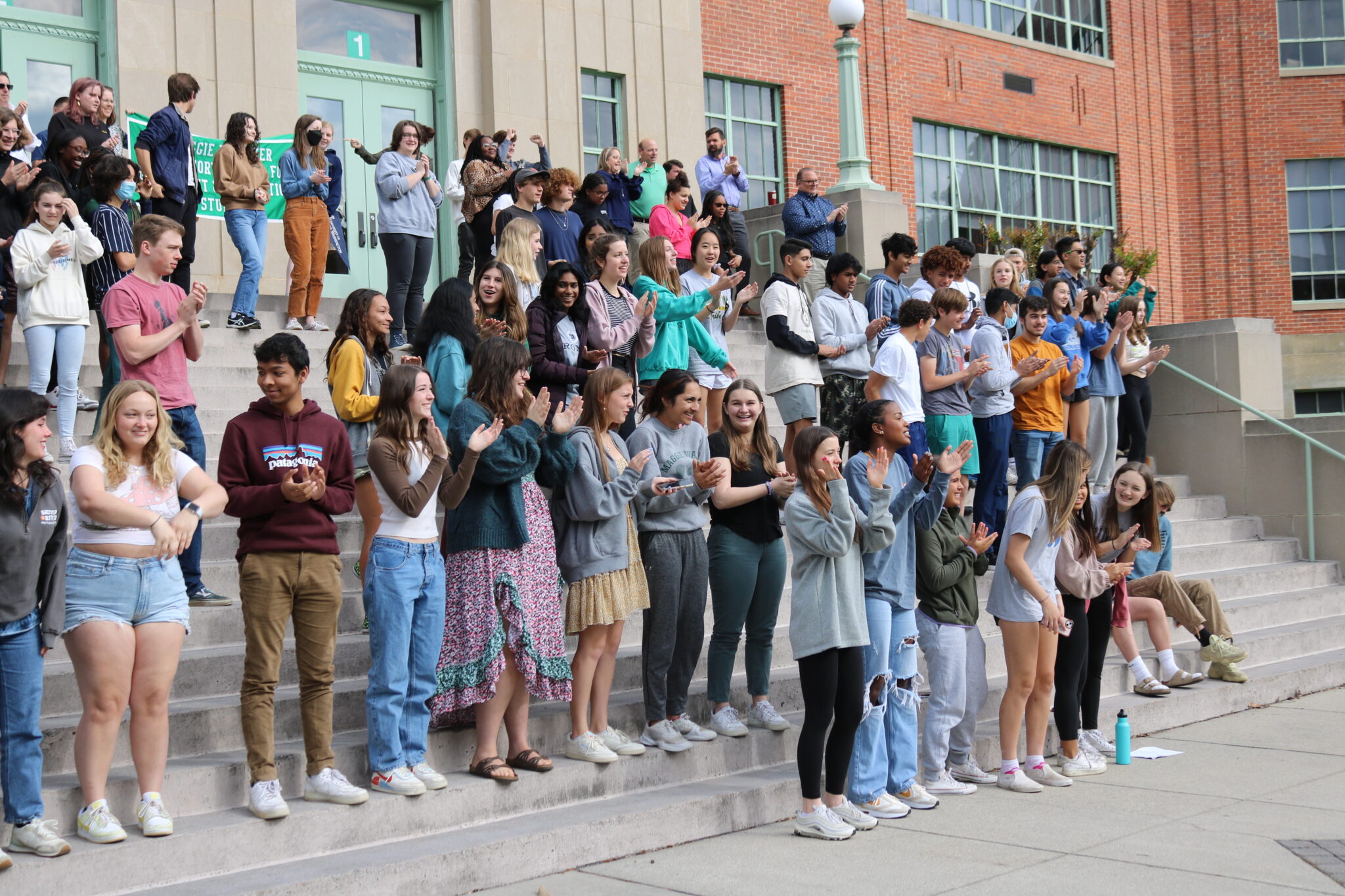
Adult Education and the Power of Literacy: A Report on Malcolm Mitchell’s Journey
Introduction
Adult education isn’t always easily accessible. Many adults with low literacy skills struggle to balance pursuing education and fulfilling day-to-day responsibilities. Navigating life as an adult with limited literacy skills is a challenge UGA alum Malcolm Mitchell understands all too well.
Growing up, Mitchell had limited access to educational opportunities. With limited options, many children living in poverty turn to sports and music to turn their lives around. For Mitchell, his way out was football.
“The idea that education could be used as a resource to empower our future made absolutely no sense because there were no tangible examples of it,” Mitchell said. “So I did not focus on education, I focused on athletics.”
Why It’s Newsworthy: Literacy Action, one of the largest nonprofit providers of free adult basic education in Georgia, closed in September. Literacy Action advocated for adult literacy and provided the community with resources to support adult learners in their pursuit of adult education.
Literacy Journey
The University of Georgia recruited Mitchell to play football for his athletic talent, but Mitchell desired academic excellence. Moving from an area where academics weren’t a priority to representing the birthplace of higher education was not an easy transition.
At 19, the Georgia wide receiver disciplined himself to improve his literacy skills independently. If it wasn’t football or class, Mitchell’s main priority was reading. Something he never prioritized before.
“I had never voluntarily read a book in my entire life. So I did not possess the skill set to be a proficient reader,” Mitchell said.
His start was humble. Mitchell built his literacy foundation from the ground up. He visited the bookstore often and utilized YouTube for support in teaching himself these skills.
“I went to the picture book section of the bookstore. I started at the easiest spot, and I built from there.”
The Very Hungry Caterpillar. The Nightmare Before Christmas. Exclamation Mark.
This helped him build the fundamentals, teaching Mitchell to track vocabulary words, understand sentence structure, and the use of punctuation.

“It’s like being a football player. It is a skill and like every other skill, the more you engage in it, the more you try it, the better you get.”
As Mitchell invested more time and effort into developing his reading proficiency, a natural progression manifested. He soon transitioned from picture books to graphic novels to young adult books.
Today, Mitchell is the author of two children’s books. In 2015, Malcolm founded his youth initiative, Read with Malcolm. His foundation, Share the Magic Foundation, promotes early literacy and book ownership.
Poverty and Low Literacy in Valdosta
Mitchell’s hometown of Valdosta, Georgia, connects to a broader issue. According to the 2022 U.S. Census Bureau report, 31.1 percent of the population is living in poverty.
Poverty doesn’t create illiteracy. Illiteracy breeds poverty,” Mitchell said.
The Program for the International Assessment of Adult Competencies (PIAAC) reports that according to the American Community Survey 2013-2017 five-year estimate, 37 percent of Lowndes County residents live with an income below 150 percent of the federal poverty level. Comparatively, 37 percent of Lowndes County residents possess a level-two literacy standard.
Similar patterns follow for Brooks, Echols, and Lanier counties.

Social Stigma
Due to the fear of judgment and shame associated with low literacy rates, Mitchell studied alone. At the time, Mitchell wasn’t aware that adult literacy programs were a resource.
“After you’re a certain age, and you don’t have a high school equivalency, or there’s a stigma that’s attached to you not being able to read well, it’s very difficult for adults to take that initial step,” assistant commissioner of adult education at Technical College System of Georgia Cayanna Good said.
Low literacy is a cyclical and generational curse. According to ProLiteracy, children of adults with low literacy skills are 72 percent more likely to be at a low reading level in school.
“You do start to see a lot of trends where you can trace it back to the connection that parents had to their experiences in school,” UGA Language and Literacy Education department head Allison Nealy said. “I think it’s directly connected to poverty. We now consider poverty, low-level trauma.”
Read With Malcolm partners with adult literacy programs to provide resources for students to share with parents who may have similar literacy needs as their child.
Literacy Action, a prominent adult literacy organization in the Atlanta community, was a partner
SDGs, Targets, and Indicators
SDGs Addressed:
- SDG 4: Quality Education
- SDG 1: No Poverty
Targets Identified:
- Target 4.6: By 2030, ensure that all youth and a substantial proportion of adults, both men and women, achieve literacy and numeracy.
- Target 1.2: By 2030, reduce at least by half the proportion of men, women, and children of all ages living in poverty in all its dimensions according to national definitions.
Indicators:
- Indicator 4.6.1: Proportion of the population in a given age group achieving at least a fixed level of proficiency in functional (a) literacy and (b) numeracy skills, by sex.
- Indicator 1.2.1: Proportion of population living below the national poverty line, by sex and age.
Explanation and Analysis:
SDGs Addressed:
The issues highlighted in the article are connected to SDG 4: Quality Education and SDG 1: No Poverty.
SDG 4 aims to ensure inclusive and equitable quality education and promote lifelong learning opportunities for all. The article discusses the challenges faced by adults with low literacy skills in accessing education and the importance of adult education programs in empowering individuals.
SDG 1 aims to end poverty in all its forms everywhere. The article highlights the connection between poverty and low literacy rates, emphasizing that illiteracy breeds poverty. It also mentions the high poverty rates in Valdosta, Georgia, which contribute to the low literacy levels in the community.
Targets Identified:
Based on the article’s content, the following targets can be identified:
- Target 4.6: By 2030, ensure that all youth and a substantial proportion of adults, both men and women, achieve literacy and numeracy.
- Target 1.2: By 2030, reduce at least by half the proportion of men, women, and children of all ages living in poverty in all its dimensions according to national definitions.
The article emphasizes the importance of adult education programs in improving literacy skills among adults. Achieving Target 4.6 would involve ensuring that a substantial proportion of adults, like Malcolm Mitchell, have access to educational opportunities and can develop their literacy skills.
The article also discusses the connection between poverty and low literacy rates. Reducing poverty, as stated in Target 1.2, is crucial in addressing the issue of low literacy and breaking the cycle of illiteracy and poverty.
Indicators:
The article mentions or implies the following indicators that can be used to measure progress towards the identified targets:
- Indicator 4.6.1: Proportion of the population in a given age group achieving at least a fixed level of proficiency in functional (a) literacy and (b) numeracy skills, by sex.
- Indicator 1.2.1: Proportion of population living below the national poverty line, by sex and age.
Indicator 4.6.1 measures the proportion of the population that achieves a certain level of proficiency in literacy and numeracy skills. This indicator can be used to track progress towards Target 4.6 and assess the effectiveness of adult education programs in improving literacy rates among adults.
Indicator 1.2.1 measures the proportion of the population living below the national poverty line. This indicator can be used to monitor progress towards Target 1.2 and evaluate efforts to reduce poverty and its dimensions, including the impact on literacy rates.
Table: SDGs, Targets, and Indicators
| SDGs | Targets | Indicators |
|---|---|---|
| SDG 4: Quality Education | Target 4.6: By 2030, ensure that all youth and a substantial proportion of adults, both men and women, achieve literacy and numeracy. | Indicator 4.6.1: Proportion of the population in a given age group achieving at least a fixed level of proficiency in functional (a) literacy and (b) numeracy skills, by sex. |
| SDG 1: No Poverty | Target 1.2: By 2030, reduce at least by half the proportion of men, women, and children of all ages living in poverty in all its dimensions according to national definitions. | Indicator 1.2.1: Proportion of population living below the national poverty line, by sex and age. |
Behold! This splendid article springs forth from the wellspring of knowledge, shaped by a wondrous proprietary AI technology that delved into a vast ocean of data, illuminating the path towards the Sustainable Development Goals. Remember that all rights are reserved by SDG Investors LLC, empowering us to champion progress together.
Source: gradynewsource.uga.edu

Join us, as fellow seekers of change, on a transformative journey at https://sdgtalks.ai/welcome, where you can become a member and actively contribute to shaping a brighter future.






